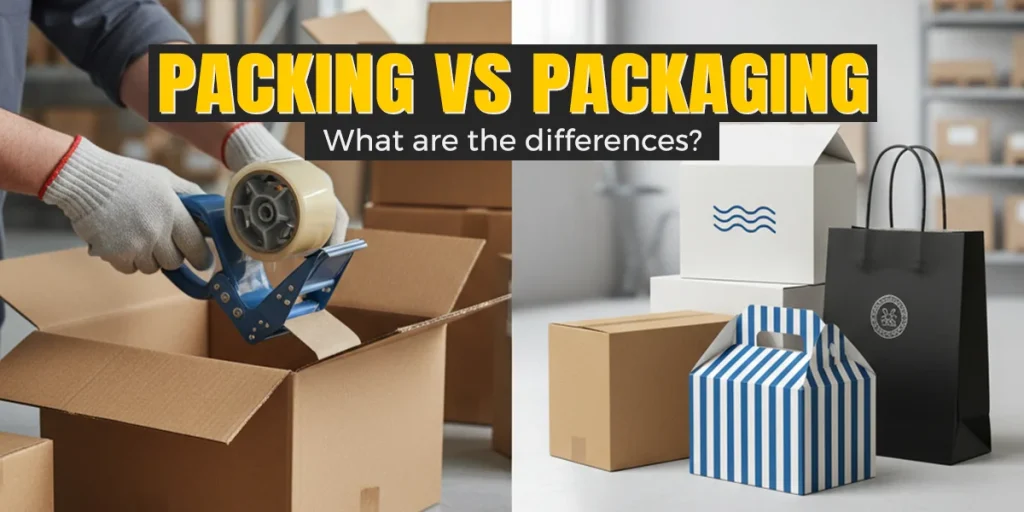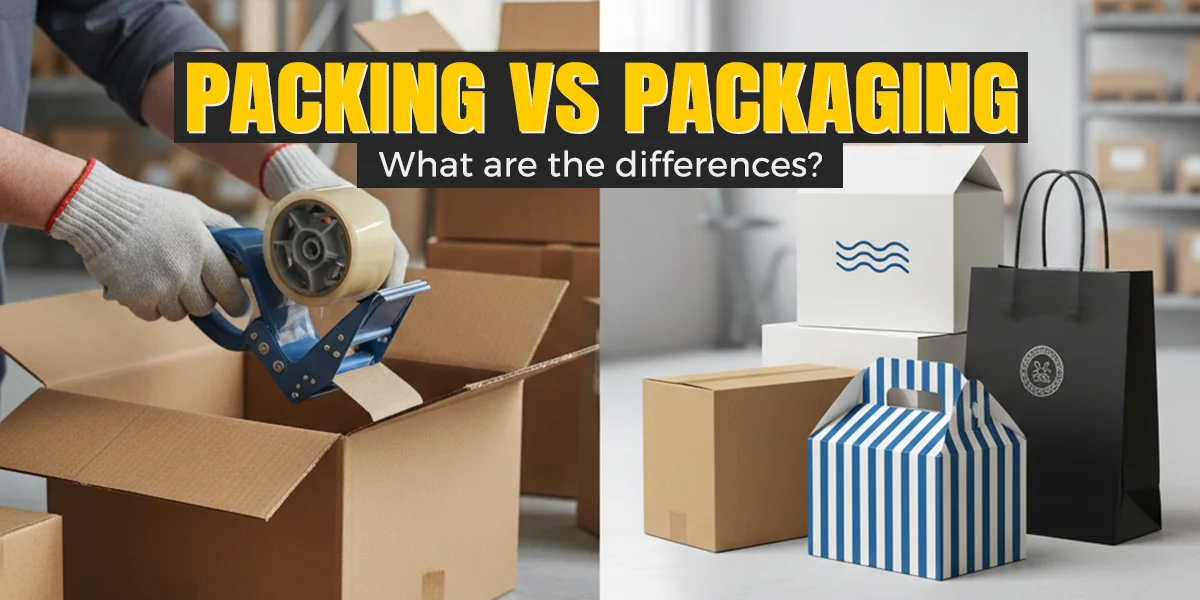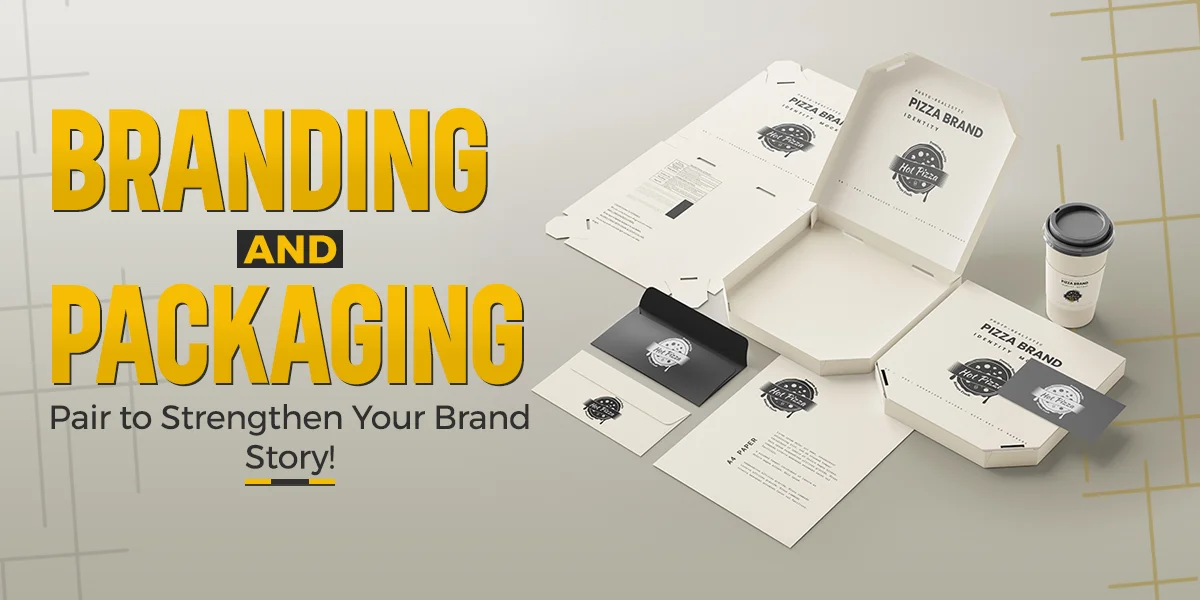For logistics and product delivery, the terms packing and packaging are used. These two concepts are closely related and have distinct purposes and processes. In this blog, we will explore the differences between packing and packaging and also discuss their roles in products’ shipping and retail arenas. Furthermore, as a packaging expert, we’ll discuss terms like packing and crating, as well as provide a clear explanation of what packaging really means.
What is Packaging?
Packaging is the sum of protective materials, designs, printing, and finishes that protect and present a product. It’s not just limited to the protection of products but also ensures the effective marketing aspects that make packaging highly important in the retail industry. The outer box, the labels, the design, all essential product’s informational inserts, and finishes are all part of the packaging.
Packaging is a colorful, branded box or the plastic wrap that keeps a product fresh for a specific time frame. Packaging not only ensures the safety of the product but also delivers the actual image of the brand. It is the first thing that contacts a consumer and introduces the product. Packaging boxes powerful tool for marketing to help brands get more sales.
When it comes to sustainability, personalized packaging boxes have become one of the main factors for companies to reduce their carbon footprint. So, it’s made of eco-friendly packaging materials like cardstock, kraft, cardboard, biodegradable plastics, and recyclable components that help brands to follow the global sustainability revolution.
What is Packing?
On the other hand, packing is the process of preparing products for shipping to keep them safe from cracks, scratches, crushes, and other damage during transit. It is a more manageable and functional process. Packing plays a key role in securing items within boxes or containers. During packing, we use different types of fillers like foam inserts, bubble wrap, foam peanuts, cardboard inserts, and others to ensure complete protection.
For example, when you order something online, the packing is a process to place the product inside a box and add necessary fillers or padding to prevent damage due to unnecessary movement and collision. This process ensures that during long-distance shipping, your product arrives at its destination in one piece.
Packing also plays a critical role in safeguarding the product from damage during transit. Whether you want to deliver fragile electronics, delicate glassware, or other perishable retail items, the protection of these items depends on the process of packing.
Packing vs Packaging: The Key Differences
Packing and packaging both are essential for the protection of products; their focus and methods differ significantly. Let’s discuss the differences between them:
Purpose Between Packing Vs. Packaging
Packaging is focused on the product’s presentation, branding, and overall customer experience. It involves both the protection and aesthetics of the retail items.
Packaging companies design customized boxes with logo according to the vision and requirements of their clients. Custom packaging boxes are also important to provide an easy unboxing experience and a guide about the product usage, benefits, ingredients, and storage instructions.
On the other hand, packing is the process of safeguarding the fragile product during transit. It is more effective and designed to prevent damage to ensure the product arrives in a single piece with actual quality.
What Materials Are Used to Create Packaging and Packing
Packaging is made with various durable and sustainable materials, including kraft, cardboard, corrugated, rigid, PET, metal tins, and others. Glass jars and decorate labels, and tags are also part of packaging. These materials are essential for personalized printing and the protection of the products.
Packing materials, on the other hand, tend to be more protective in nature. Common packing materials include bubble wrap, foam, corrugated cardboard, packing peanuts, and stretch film. These materials are used to fill gaps, cushion the product, and absorb any impact during mishandling to prevent damage.
Other Main Differences
Packaging happens at the manufacturer or retail level. It is designed to show the product’s features, protect it on a shelf, and ensure it is easily shipped to customers. During the shipping, it also ensures the presentation and marketing of the product. Packaging usually takes place before the product is sold or shipped. It’s part of the initial stages of bringing a product to market.
Packing, however, occurs closer to the point of shipment. It’s used when the product is prepared for shipment. Packing ensures that the product remains intact during the hustle and bustle of shipping. Packing takes place when a product is about to be sent out for shipment. This step happens in the logistics or warehousing stages of the supply chain.
Packing and Crating: Gain Insights
Packing is referred to as protecting products in a box. Packing and crating involve a more complex process that includes the use of wooden crates or custom-made containers to protect fragile or high-value items. This is used for shipping large, expensive, or delicate products, like machinery, artwork, beverages, or electronics.
Crating adds an extra layer of protection that standard packing materials do not provide. Wooden crates are used for larger items that require more support and security. These crates can be customized to fit the product perfectly. It ensures minimal movement during transport and protects fragile items from external elements such as moisture, temperature fluctuations, or internal harmful impacts.
Pack vs Package: Find the Difference
When we talk about pack vs package, the distinction is quite clear, though the words are often used in casual conversation. To pack something refers to the act of placing it into a container, while to package is the whole box filled with the products, including subscription items or mailing items, packed in a box.
Conclusion
In the summary of packing vs. Packaging, Packing and packaging are often used interchangeably, but they play different roles in the world of product delivery and retail. Packaging is ideal for the presentation, branding, and product protection for sale. On the other hand, packing is about ensuring that the product is securely contained and protected during transport. If you want to safely pack your products, you can purchase product packaging wholesale from Silver Edge Packaging.





